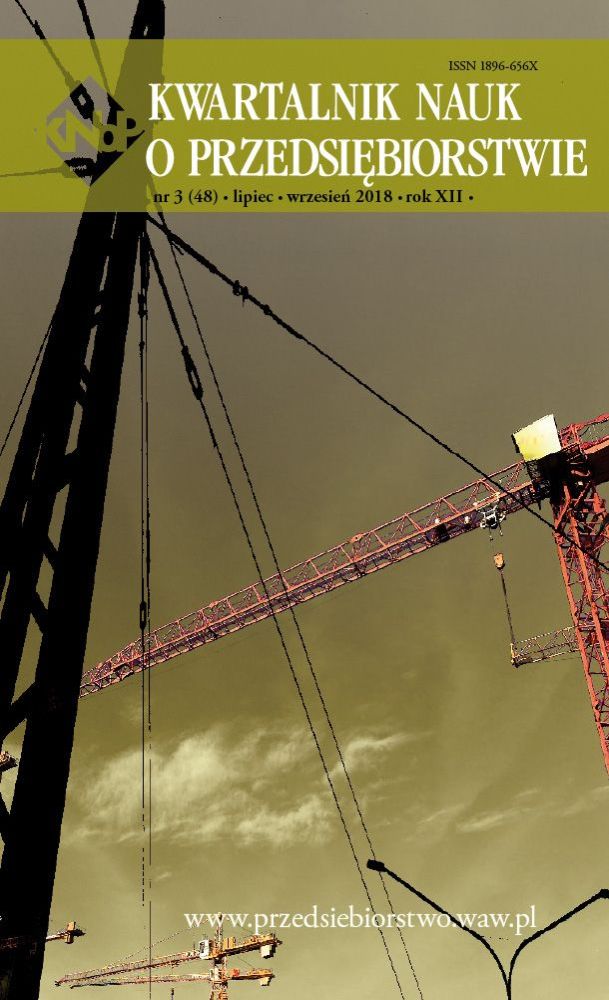Tools to Create Appropriate Perception of CSR and PR Practitioners Support
Main Article Content
Abstract
The article aggregates a variety of tools aimed to boost awareness and understanding of social responsibility among different groups of shareholders. At the same time the re-search shows a list of tools applicable for public relations (PR) practitioners (not only) to disseminate and promote corporate social responsibility (CSR). This paper emphasizes two groups of tools as qualitative and quantitative. All the tools were analyzed according to the scope of needed activities and interpreted in terms of applicability to the CSR goals.
Downloads
Article Details
The author of the article declares that the submitted article does not infringe the copyrights of third parties. The author agrees to subject the article to the review procedure and to make editorial changes. The author transfers, free of charge, to SGH Publishing House the author's economic rights to the work in the fields of exploitation listed in the Article 50 of the Act of 4 February 1994 on Copyright and Related Rights – provided that the work has been accepted for publication and published.
SGH Publishing House holds economic copyrights to all content of the journal. Placing the text of the article in a repository, on the author's home page or on any other page is allowed as long as it does not involve obtaining economic benefits, and the text will be provided with source information (including the title, year, number and internet address of the journal).
References
Abercrombie N., Hill S., Turner B.S. [1994], Dictionary of sociology (3rd ed.), Harmondsworth, Penguin.
Artiola J.F., Pepper I.L., Brusseau M.L. [2004], Environmental Monitoring and Characterization, Elsevier Science & Technology Books.
Benn S., Todd L.R., Pendleton J. [2010], Public Relations Leadership in Corporate Social Responsibility, “Journal of Business Ethics”, Vol. 96(3). DOI 10.1007/s10551-010-0474-5.
Clark C.E. [2000], Differences between public relations and corporate social responsibility: An analysis, “Public Relations Review”, Vol. 26(3).
Federation of Small Businesses [2007], Social and Environmental Responsibility and the Small Business Owner, Federation of Small Businesses, London, December.
Grancea I. [2017], Social Engagement as a Vector of Brand Communication, “The Scientific Annals of Alexandru Ioan Cuza”, Vol. 10(1).
Garsten N., Bruce I. [2018], Communicating Causes: Strategic Public Relations in the Non-Profit Sector, Routledge.
Kim S-Y., Park H. [2011], Corporate Social Responsibility as an Organizational Attractiveness for Prospective Public Relations Practitioners, ”Journal of Business Ethics”, Vol. 103(4). DOI 10.1007/s10551-011-0886-x.
Kosterec M. [2016], Methods of Conceptual Analysis, “Filozofia”, Vol. 71(3).
Morgan D.L. [1996], Focus Groups, “Annual Review of Sociology”, Vol. 22.
Mundy D.E. [2015], Diversity 2.0: How the public relations function can take the lead in a new generation of diversity and inclusion (D&I) initiatives, “Research Journal of the Institute for Public Relations”, Vol. 2(2).
Muzykant V.L., Mfarrej F. [2018], Corporate Social Responsibility (CSR) of PR in Syrian and Russian telecommunication companies in crisis. A comparative analytical study on communication activities of MTN and MTC companies, “RUDN Journal of Studies in Literature and Journalism”, Vol. 23(1).
Okafor O.Ch., Nwatu Ch.B. [2018], Public relations as a tool for attaining educational institution objectives in ENUGU state, “International Journal of Marketing and Management Research”, Vol. 9(3).
Quinn D., Hargie O. [2004], Internal Communication Audits: A Case Study, “Corporate Communications: An International Journal”, Vol. 9.
Santos E.A. [2017], Prioritization of social actions developed by a company from Ponta Grossa – PR based on the social necessities of the region, Parana, Ponta Grossa, Federal University of Technology.
Social Audit [2005], Social Audit: A Toolkit A Guide for Performance Improvement and Outcome Measurement Director General & Executive Director, Centre for Good Governance, Jubilee Hills (India).
Ventresca M.J., Mohr J.W. [2001], Archival Research Methods, Joel A.C (ed.), Baum, Blackwell Publishers.
Verstappen S.H. [2001], Public & Corporate Relations Audit, San Francisco, Canto Public Relations Audit.

